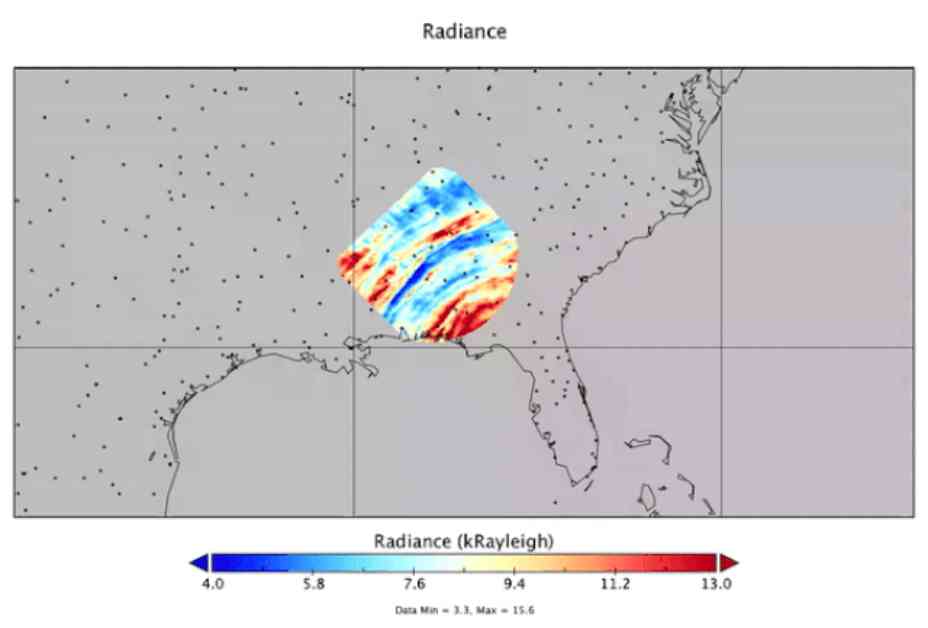NASA recently released images showing gravity waves emitted by Hurricane Helene rippling through the sky. These waves were observed 55 miles above Earth’s surface, spreading far north of Florida as the storm made landfall. The images, captured by the agency’s Atmospheric Waves Experiment (AWE), revealed concentric bands of atmospheric gravity waves stretching across the Southeast.
Atmospheric gravity waves are vertical ripples that move through the atmosphere, creating peaks and troughs. They can be generated by various weather events such as large thunderstorms, wind bursts, hurricanes, tornadoes, and even tsunamis. Unlike gravitational waves, which are ripples in space-time resulting from cosmic events like black hole collisions, atmospheric gravity waves are a different phenomenon.
The AWE instrument, mounted on the International Space Station, detects these waves by measuring airglow emitted by gases in the mesosphere, the third layer of Earth’s atmosphere. This layer ranges from 31 to 53 miles above the Earth’s surface. AWE began observing in November 2023, and the images of Helene’s gravity waves are among the first publicly released by NASA.
Hurricane Helene was a powerful Category 4 storm with winds reaching 140 mph when it made landfall near Perry, Florida. The storm caused significant damage and led to massive flooding as it moved inland, resulting in over 230 fatalities. The AWE project aims to help scientists understand how weather phenomena on Earth’s surface can impact space weather in the upper atmosphere.
It is fascinating to see how these gravity waves, generated by a natural disaster like Hurricane Helene, can be observed and studied from space. The insights gained from such observations can contribute to our understanding of Earth’s complex atmospheric processes and their potential implications for space weather. NASA’s continuous monitoring and research efforts provide valuable data for scientists studying the interactions between Earth’s weather systems and the outer atmosphere. By analyzing these gravity waves, researchers can gain valuable insights into the dynamics of our planet’s atmosphere and improve our ability to predict and respond to severe weather events in the future.










